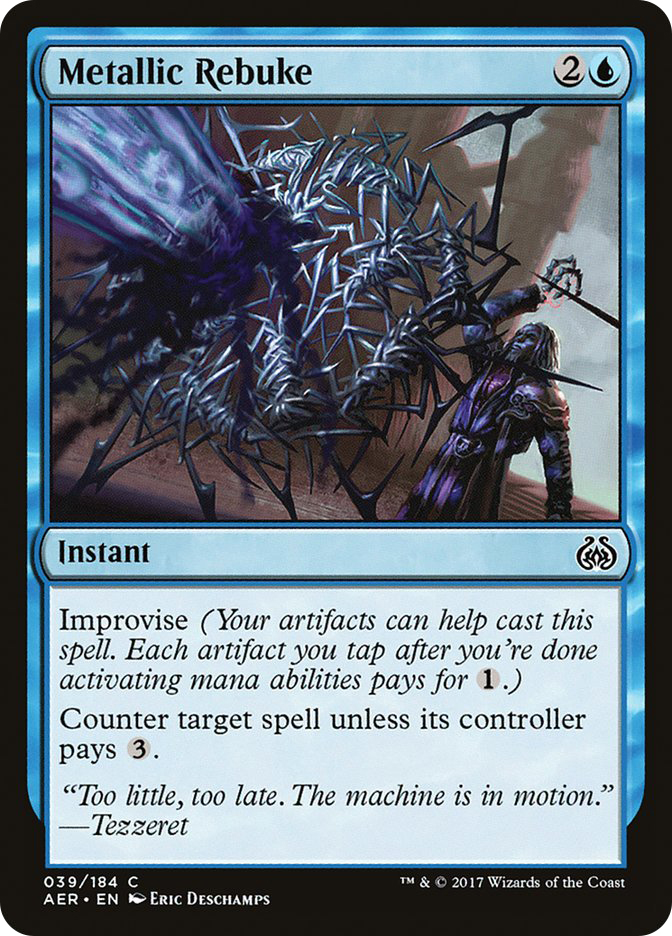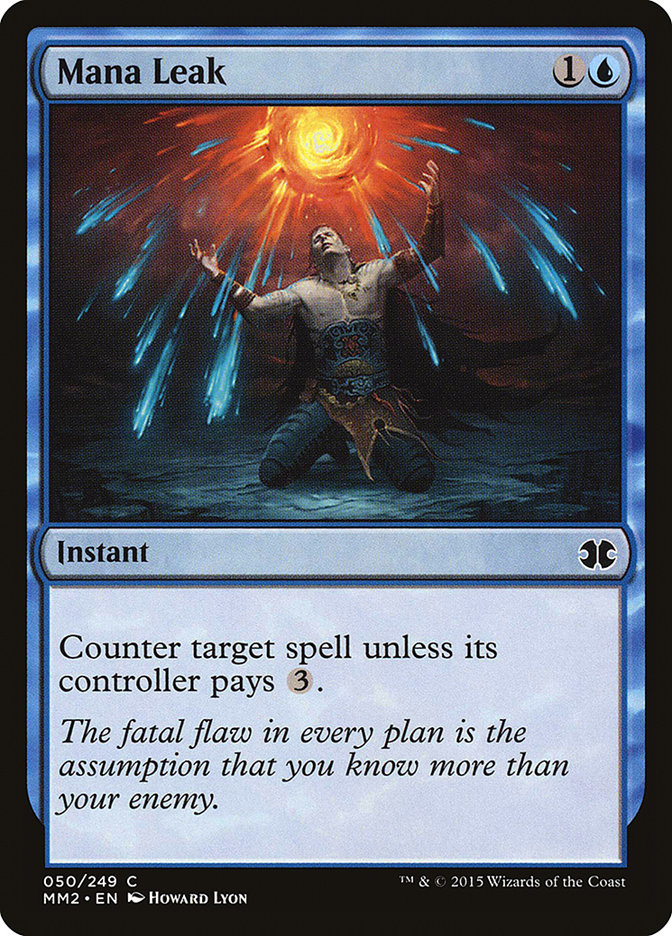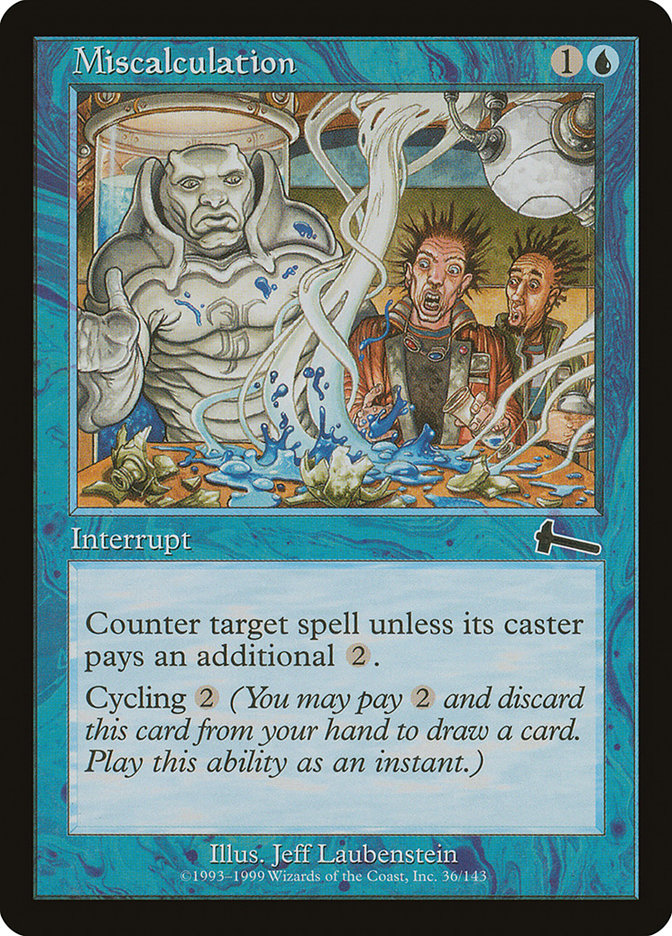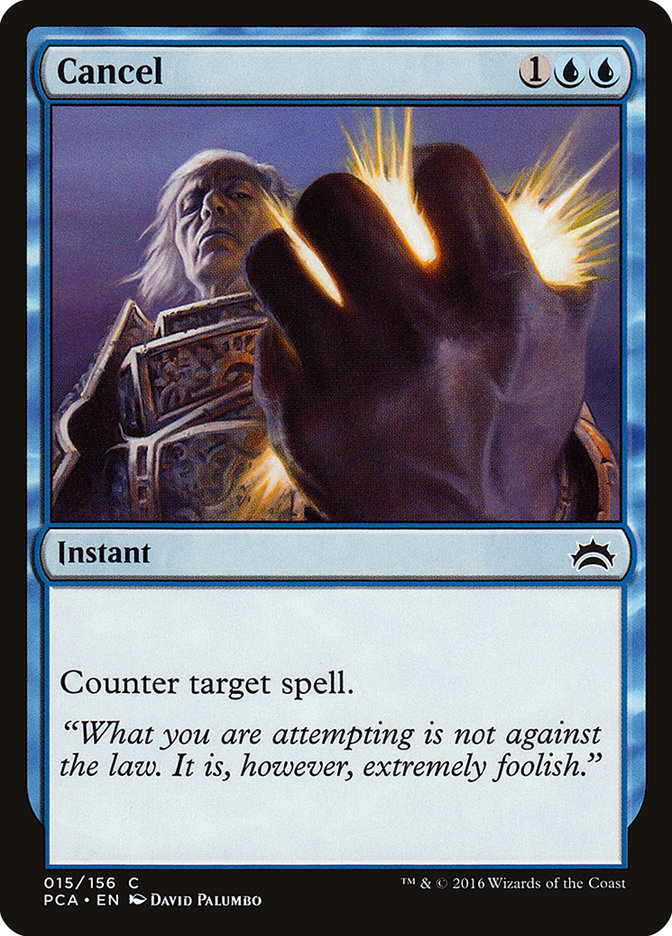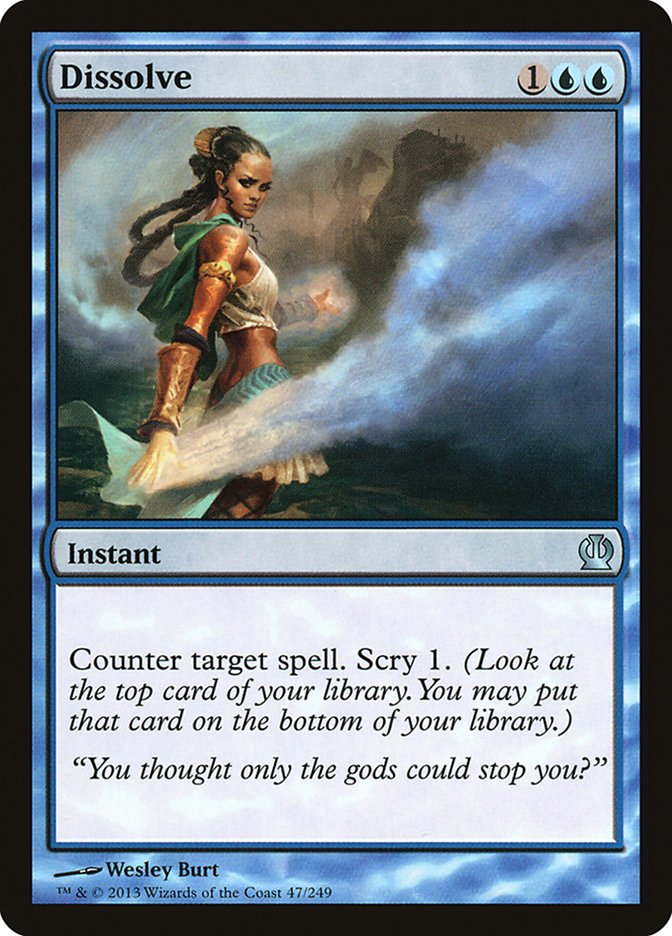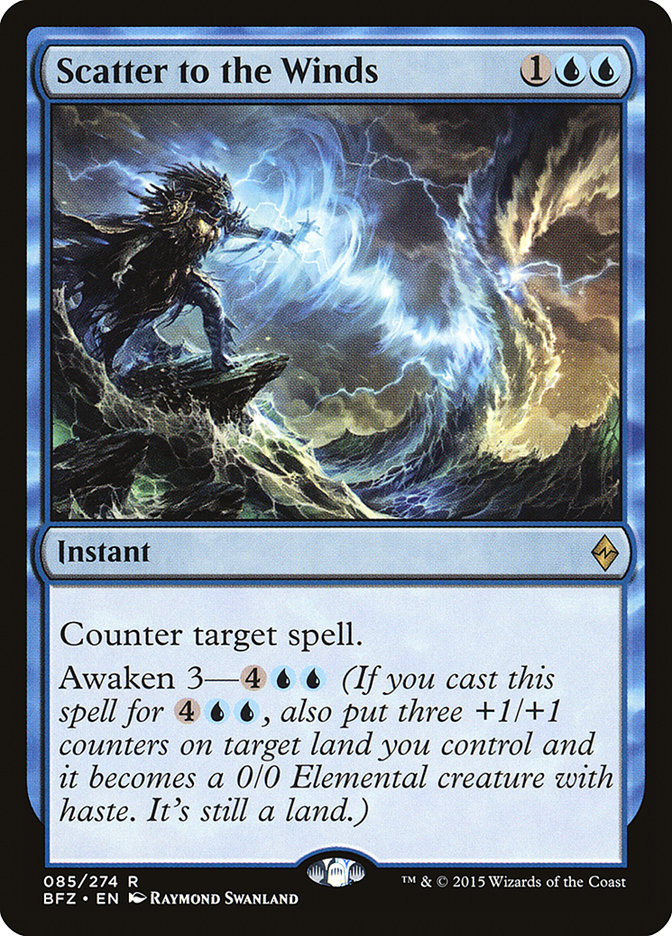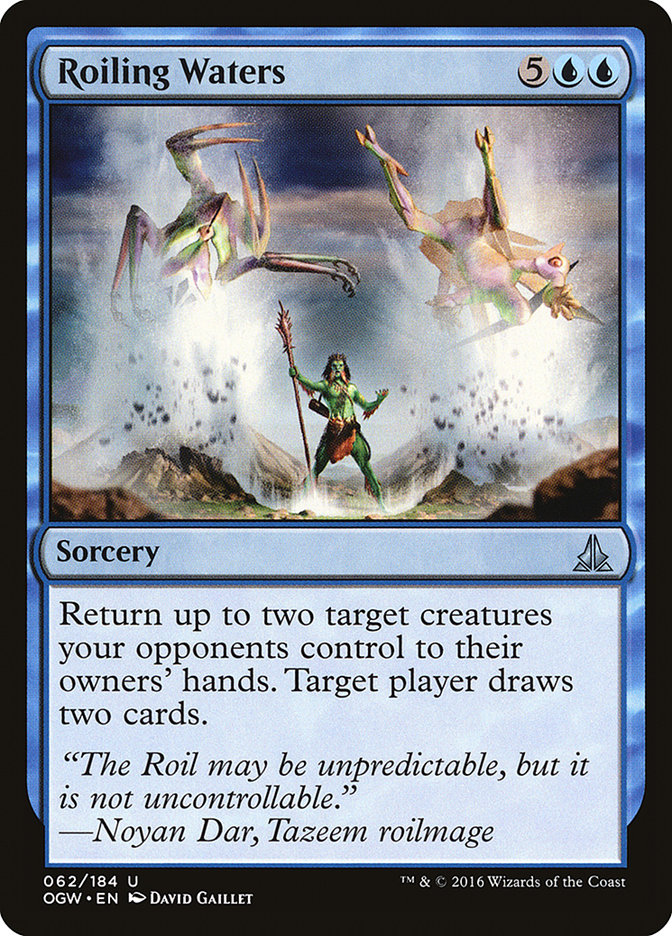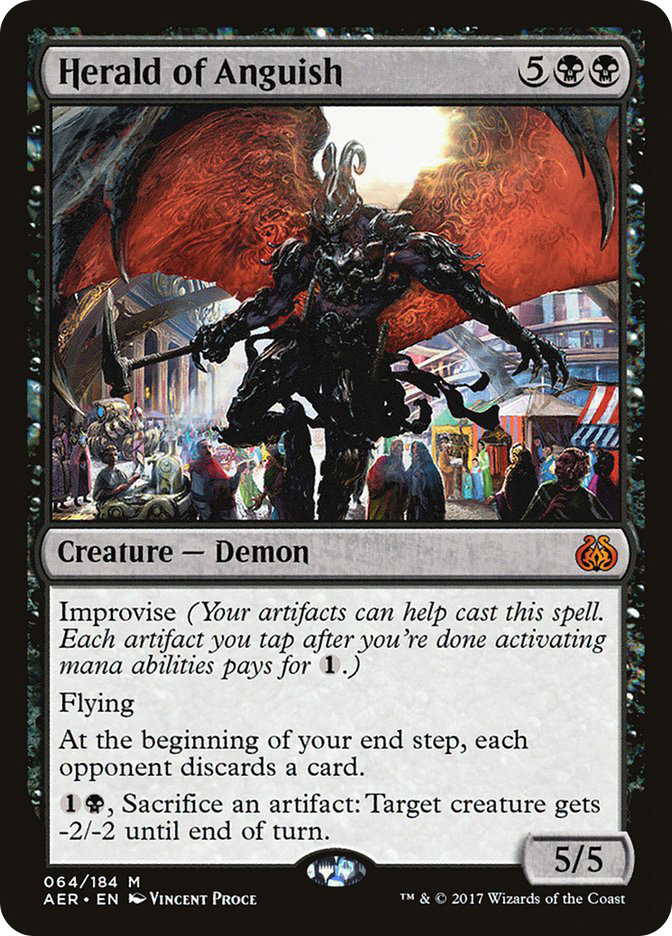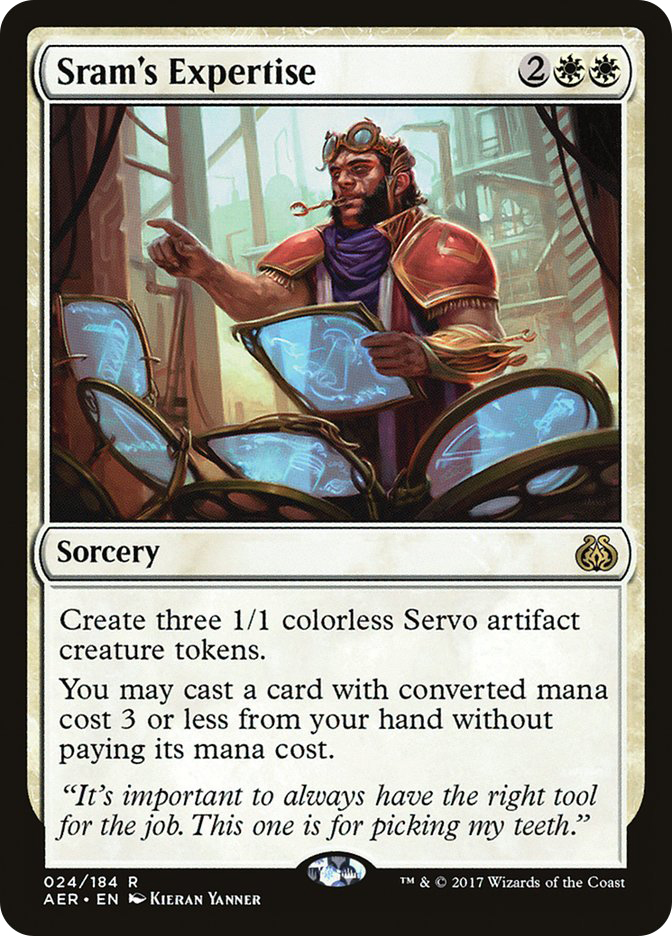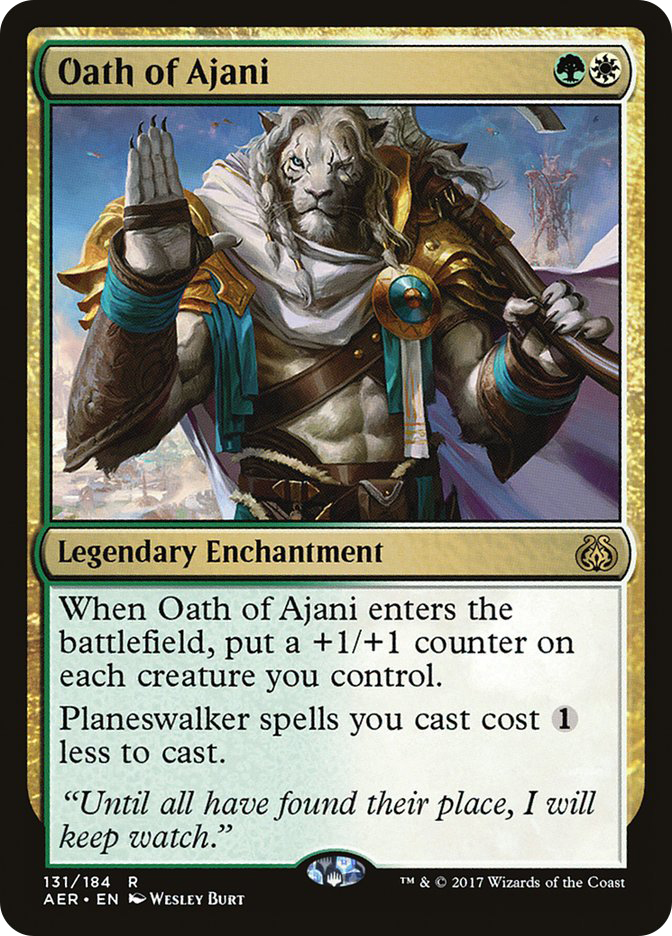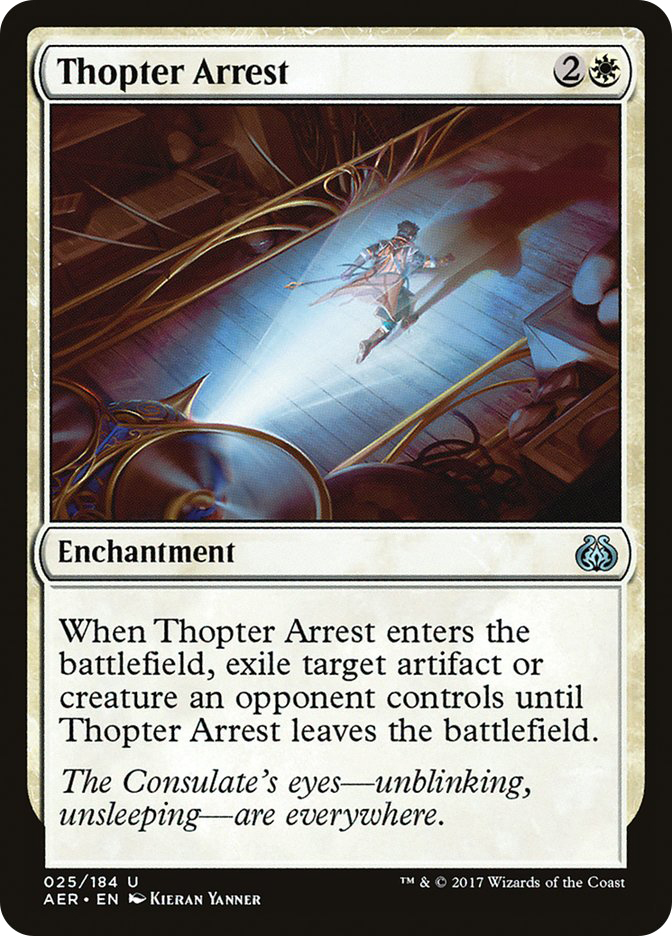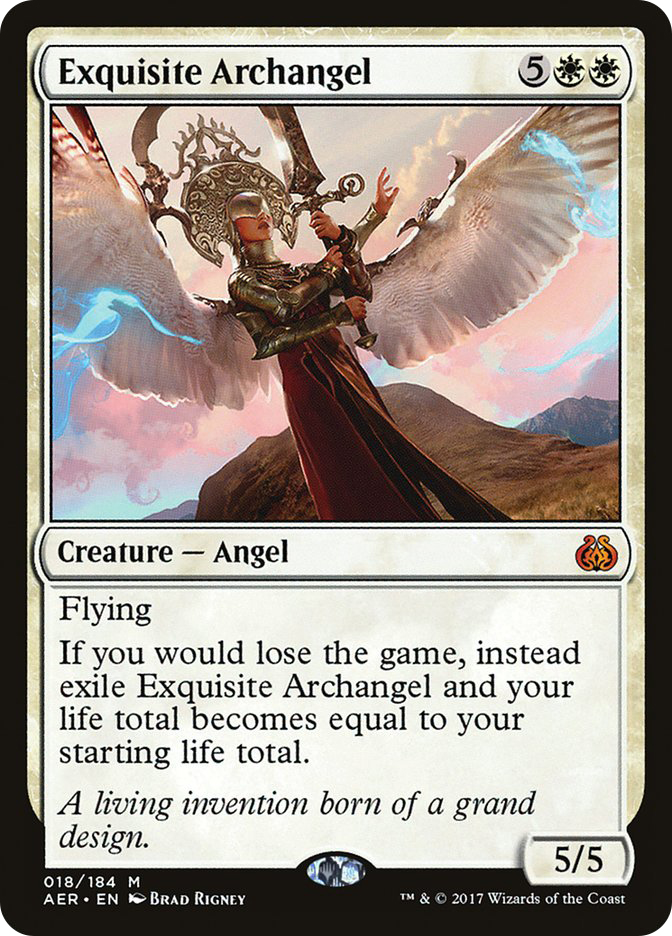The waning months of Kaladesh Standard were a good time to be a combo player. Multiple varieties of Aetherworks Marvel decks exploded in popularity as the format drew to a close, taking down the Invitational in the hands of Jacob Baugh and placing two copies into the Top 4 of the Players’ Championship. Combo decks historically don’t see a lot of success in Standard, so the prominence of Aetherworks Marvel was a refreshing breath of fresh air for aficionados of the combo archetype. And we’re not even done!
If combo was your jam but Aetherworks Marvel wasn’t quite your speed, Kaladesh Standard had you covered. Somehow this was a Standard format where more than one combo deck was not only playable, but actually good. The R/G Energy deck featuring Electrostatic Pummeler showed up in a big way on Magic Online in the weeks preceding Pro Tour Kaladesh where it showed up in the hands of many pilots, despite not reaching the Top 8. Its popularity proved to be short-lived, however, and soon fell to fringe status for much of the format. Until, that is, Joe Lossett chose to wield a Temur-colored update on the powerful combo deck for the Standard portion of the Players’ Championship. Which he won.
Creatures (20)
Lands (20)
Spells (20)
- 4 Uncaged Fury
- 3 Rush of Adrenaline
- 4 Larger Than Life
- 4 Blossoming Defense
- 4 Attune with Aether
- 1 Built to Smash
Sideboard

For those of us who aren’t exactly the biggest fan of seeing combo decks run amok in Standard, Aether Revolt was there in the future, promising sweet relief. Let the combo players have their day in the Standard sun; surely, we thought, surely combo can’t continue to be good. This is Standard, for crying out loud! Games are supposed to be long and grindy or short and aggressive, decided by efficient beats or raw card advantage. They definitely aren’t supposed to be decided by the successful assembling of some kind of machine and the energy to power it or by throwing pump spells onto creatures for upwards of 100 points of damage.
Well, no one passed that memo on to Aether Revolt. Or maybe the set was just feeling surly, I don’t know. But unless you’ve been living under a mundane rock this last week, you’ve probably seen the news.
Combo isn’t dead yet.
Emrakul, the Promised End may be leaving us, but I still don’t think we’ve seen the end of game-ending combinations. If this crazy new combo Standard has you salivating and you’re looking for sweet technology and a starting decklist, I’m afraid you’ve come to the wrong place. But don’t worry, I’ll still help you out. Try this on Premium.
If you’re still here, you must be asking the same question I am: what’s a midrange girl to do, living in a combo world? Or, you know, a slight variation on that theme. Well, I have good news! Aether Revolt might not have brought us the relief from combo we sought, it might have even worsened the problem, but it didn’t completely abandon us. Buried deep in the set are tools waiting to be found, waiting to be utilized against our combo overlords.
Long live the revolution.
Interactional Upgrades
Let’s begin with the low-hanging fruit: how can we stop our combo opponent from doing their thing?
It shouldn’t come as a huge surprise that combo decks come in threes (or multiples, at the very least). There is a neat symbiotic relationship between different combo decks in a format, a metagame-level synergy internal to the archetype. The success of one combo deck creates holes in a format that can be exploited by another to great success, which will then feed into a third combo deck’s success. So on and so on, until the original successful deck is itself benefited by this domino effect. This is a phenomenon unique to the combo archetype, caused by the simple fact that different combo decks must be attacked in completely different ways.
Suppose two weeks ago the SCG Tour Open in FarAwayCity, USA was won by Mono-Red Aggro. Being a savvy metagamer, you load up on spot removal and efficient defensive creatures for the next Open in Hometown, USA. You’ve tested your Mono-Red Aggro matchup a lot in preparation and are super-confident in your chances. But when the tournament begins, Mono-Red Aggro is nowhere to be seen. Apparently Mono-White Aggro dominated Magic Online over the last two weeks, crushing the Mono-Red Aggro deck without losing much percentage against the rest of the field. You’ve never seen the deck before in your life. Whoops.
Guess what? You’re fine. One aggro deck plays an awful lot like another aggro deck from the perspective of a midrange or control strategy. The removal and defensive bodies you brought along to beat Mono-Red Aggro are going to do the job against Mono-White Aggro just fine. Sure, sometimes the best card against Aggro Deck A isn’t the best card against Aggro Deck B, but odds are, both of those best cards approach 95% of optimal even in the wrong matchup. Point is, they’re very close. Congratulations, you’re the HomeTown Open Champion!
However, if you had made that mistake while trying to beat a Mono-Red Combo deck that ended up nowhere to be found, replaced in the metagame by some different combo deck, you would soon find yourself on the outside looking in, mathematically eliminated from Top 8 contention. Unlike the aggro archetype, the thread that holds the combo archetype together isn’t a play style but the idea of combining individual cards to great effect. The foundation of every combo deck is a specific interaction, and beating a combo deck without a focused attack on that interaction is exceedingly difficult. The cards you want against one combo deck are not necessarily the same cards you want against any other.
In combo-dominated formats, cards that are excellent against every combo deck are hard to find. Enter Metallic Rebuke. Counterspells are one of the few classes of cards that don’t actually care about what specific interaction the opponent is trying to assemble. The problem these days is that the counterspells in Standard are, for the most part, not very powerful. Counter spells that function as the generic answer we’re looking for seldom cost less than three mana.
The problem with these three-mana counterspells is that you aren’t fooling anyone with these cards. No self-respecting combo player is showing up to a tournament without a plan for beating Cancel. Three mana is a lot. Committing to leaving three lands untapped every turn to make sure your opponent can’t combo you means drastically slowing down the advancement of your own gameplan. Given enough time, the combo deck will find a way to beat all your counterspells, guaranteed. So don’t go jamming four-of Scatter to the Winds in every deck, but let’s start getting excited for Metallic Rebuke.
The cost reduction on Metallic Rebuke is a big deal. Two mana is way more doable than three mana, and the dream single-mana scenario is even better. Deploying actual threats while still leaving Metallic Rebuke up is not a huge challenge, especially for a well-constructed deck with artifact threats or incidental early artifacts. Clue tokens, anyone?
Metallic Rebuke is best suited for a tempo oriented strategy that can take advantage of its ability to play effective defense while still going on the offensive with the rest of your cards. Not only is a tempo deck interested in committing permanents to the battlefield early (which can easily be artifacts), it has a vested interest in ending the game before the fact that Rebuke is a Mana Leak and not a Counterspell becomes an issue. Here’s a take on an update to W/U Flash geared to make effective use of Metallic Rebuke.
Creatures (22)
- 4 Archangel Avacyn
- 4 Thraben Inspector
- 2 Thalia, Heretic Cathar
- 4 Spell Queller
- 4 Selfless Spirit
- 4 Scrapheap Scrounger
Planeswalkers (4)
Lands (25)
Spells (9)

Losing Reflector Mage and Smuggler’s Copter obviously hurts W/U Flash a good deal, but I’m hopeful that Metallic Rebuke will help to make up some of that lost ground. Scrapheap Scrounger is reminiscent of the Esper Aggro deck developed by Team MGG last year, but this list is much closer to traditional W/U Flash. Scrapheap Scrounger increases the artifact count for Rebuke and makes the deck more aggressive to help enable closing the game out before the window on Metallic Rebuke’s peak effectiveness closes. Aethersphere Harvester rounds out the artifact count and gives the deck very real game against aggressive strategies. One last note: the synergy between Always Watching, artifact creatures, and Metallic Rebuke is real.
Sadly, we can only play four copies of Metallic Rebuke, and some of the decks we want to play might not even be blue! Fatal Push and Shock are certainly less well-rounded than Metallic Rebuke, but they have the advantage of requiring no work to only cost one mana.
I can’t stress enough how important it is that your combo interaction is cheap. I haven’t and won’t talk about Disallow despite it countering any combo piece or an Aetherworks Marvel spin, simply because it costs three. Don’t get me wrong, Disallow will likely play an important role in fighting combo during its time in Standard, but three-mana interaction is not what beats combo. It plays a support role, keeping the door closed while your established battlefield presence takes the game down, but having cheap interaction that will let you build that battlefield and live to utilize it is important.
In their role as combo-breakers, Shock and Fatal Push are very similar. They are both cheap answers to Electrostatic Pummeler, greatly increasing our odds of being able to double- or triple-removal spell over the top of pump spells in ideal scenarios, and at worst working to strand the pump in our opponent’s hand by keeping the battlefield clear of creatures. The addition of these two spells to the format greatly increases the importance of Bristling Hydra to the Energy Combo deck.
Both of these cards also stop the Saheeli Rai / Felidar Guardian combo. Fatal Push can destroy Felidar Guardian with its trigger on the stack. This is not a super-reliable defense, however, as Fatal Push requires Revolt to do this. If you find yourself in this matchup, make sure you keep an Evolving Wilds or a Clue token sacrifice up to turn on your Fatal Push if you’re depending on it.
Shock, however, requires nothing of the sort. The little burn spell that could even deals with the more troubling standalone permanent, Saheeli Rai herself. Simply aim Shock at your opponent’s face with Saheeli’s clone ability on the stack, redirect the damage to Saheeli, and rest easy knowing you’re going to get another untap step before the end of this game.
Fatal Push and Shock are both cards you will want to put in your deck for reasons other than beating combo decks. The fact that they are both capable combo-breakers is pure upside. Alone, they won’t be enough to beat combo, but their raw power level nigh guarantees a level of ubiquity in the format that will make life less than perfect for the combo player. Midrange opponents won’t be defenseless babies in Game 1, unable to protect their candy from the combo bully. Going into post-sideboard games, having maindeck removal spells that aren’t blanks is a huge boon in reaching a 60-card configuration that has an excellent combo game.
Uncharted Waters
It’s really great that Aether Revolt is adding to our pool of interactional cards with which to fight combo strategies. Some of these new cards will play pivotal roles in keeping this Standard from becoming the next Combo Winter. But let’s be honest: no one’s getting really excited over getting to upgrade their Revolutionary Rebuff to Metallic Rebuke or their Grasp of Darkness to Fatal Push. Luckily for us, Aether Revolt also has some exciting proactive cards and strategies well-suited to combating combo.
Nobody is really talking about this card. I mean, I get it. It costs seven! Or does it? Improvise is a hard-to-evaluate mechanic on Herald of Anguish. With Metallic Rebuke, it’s pretty easy to see that most of the time in a well-constructed deck it will effectively be Mana Leak. But how early are we hoping to cast this Herald? A one mana discount is trivial, two is doable, but can we reliably get Herald down to costing four? If so, the card is great.
On the battlefield, Herald of Anguish has a formidable anti-combo presence. Not only is it a 5/5 with flying, easily dominating most battlefields and providing a significant clock, its discard ability is probably at its best against combo. Denying combo decks resources is huge. Without sufficient resources, combo has a much harder time overcoming even weak resistance, giving slower midrange decks more room to breathe. And hey, if you untap with this Demon one time, throwing two artifacts at a Felidar Guardian is a real possibility. Electrostatic Pummeler doesn’t stand a chance.
As far as being reasonably able to play Herald of Anguish goes, I’m envisioning something along the lines of the aggressive variants of B/G Delirium from last format. Clue Tokens created off Tireless Tracker go a long way towards discounting Herald. Evolving Wilds is basically a Lotus Petal with a Tireless Tracker on the battlefield. No promises that this card is good, but I think it stands a fair chance and is for sure a great wrench to throw into the cogs of a combo machine.
One last strategy to talk about before I leave you to ruminate on all things Magic at your leisure: aggro.
Last week on Premium, Tom Ross gave his excellent take on how to bring aggressive strategies into an Aether Revolt world. Aggro is an excellent strategy for beating combo. No need to interact if they die before they can find the combo pieces they need. Tom’s lists are about as aggressive as you can possibly be, and that is probably a great place to be. But if all-in aggression isn’t your style, here’s a list that retains some of that aggro edge against combo while being a tad slower.
Creatures (14)
Planeswalkers (8)
Lands (24)
Spells (14)

I have to say, I am very excited for Sram’s Expertise. The whole cycle of Expertise cards is really cool, the rebate mechanic stapled onto them is really interesting, and I can’t wait to see in action. Sram’s Expertise appeals the most to me, as the mana advantage all the Expertises provide feels particularly well-suited for a token-centered strategy.
Coincidentally, mana advantage is at the heart of what I’ve been talking about as the key to fighting combo. Developing a formidable battlefield quickly so you can put your combo opponent under significant pressure while leaving up interaction for their combo is critical. Sram’s Expertise enables this in style. Your opponent had better be able to end the game on the turn you tap out for Sram’s Expertise, because if not, you will never need to tap out again. This list may want some more interaction to take better advantage of that fact and have a better game against combo.
Thopter Arrest deserves a few words. It’s not an upgrade to Stasis Snare in the strictest sense, as it does not have flash. However, it’s significantly less colored-mana-intensive and hedges you against artifact-based combos, of which there are a lot in this Standard format. Aetherworks Marvel may have lost Emrakul, the Promised End, but you can be sure some players will still be spinning the wheel looking for Ulamog, the Ceaseless Hunger. And in a Week 1 Standard, who knows? You might need to remove a Paradox Engine or Gonti’s Aether Heart. #SCGCOL is going to be the Wild West, and you could do worse than to hedge against degenerate artifact combos.
Oh, and hey, if nothing else seems to be working and combo seems unbeatable, you could always sit back and hope for some Guardian Angel ex machina…
Hey, it could happen!



